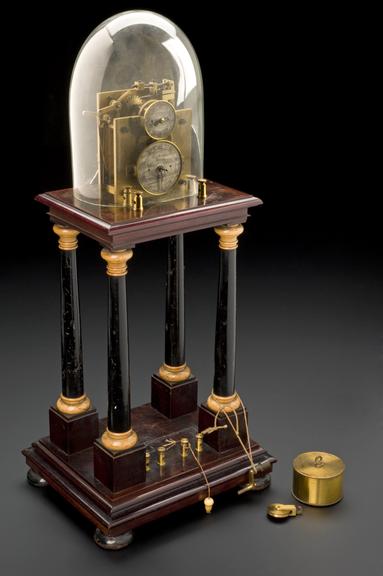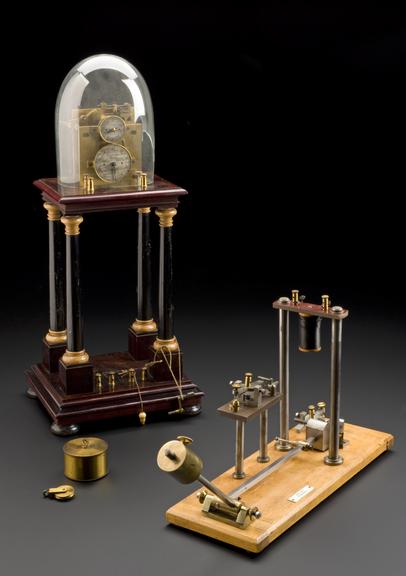Hipp chronoscope
Hipp chronoscope, by Peyer Favarger et Cie, Neuchatel, Switzerland
- Measurements:
-
overall: 4.75 kg
- Object Number:
- 1996-277/23/1
- type:
- chronoscope
- Image ©
- The Board of Trustees of the Science Museum


Hipp chronoscope with key and weight and (damaged, incomplete) glass cover, by Peyer Favarger et Cie, Neuchatel, Switzerland
Made by Matthias Hipp (1813-1893) of Neuchatel, Switzerland, this device was used to measure short intervals of time to within 1/1000th of a second. Its timekeeping element is not a pendulum but a metal reed which vibrates 1000 times per second above an escape wheel; one tooth of the escape wheel passes it every one-thousandth of a second. In use, the clockwork is kept in continuous motion and the indicating mechanism is started and stopped by electromagnets. Hipp's chronoscopes were originally used in military research experiments to measure the speed of projectiles but achieved popularity with the advent of experimental psychology laboratories in the late 19th century, in which they were used to try to determine the speed of thought. This chronoscope was used by the psychology department at Bedford College, University of London from 1900-1969.
Hipp chronoscope, by Peyer Favarger et Cie, Neuchatel, Switzerland

Key, weight and (damaged, incomplete) glass cover, from Hipp chronoscope, by Peyer Favarger et Cie, Neuchatel, Switzerland
Glass part, broken/incomplete

